The Western Digital Black PCIe SSD (512GB) Review
by Billy Tallis on March 8, 2017 8:30 AM ESTSequential Read Performance
The sequential read test requests 128kB blocks and tests queue depths ranging from 1 to 32. The queue depth is doubled every three minutes, for a total test duration of 18 minutes. The test spans the entire drive, and the drive is filled before the test begins. The primary score we report is an average of performances at queue depths 1, 2 and 4, as client usage typically consists mostly of low queue depth operations.
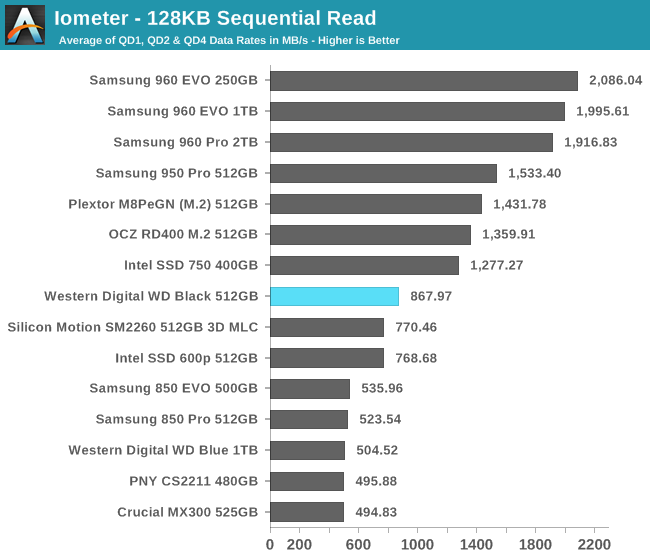
The sequential read speed of the WD Black beats the Silicon Motion SM2260 drives (both MLC and TLC), but the WD Black is otherwise way behind the rest of the PCIe SSDs.
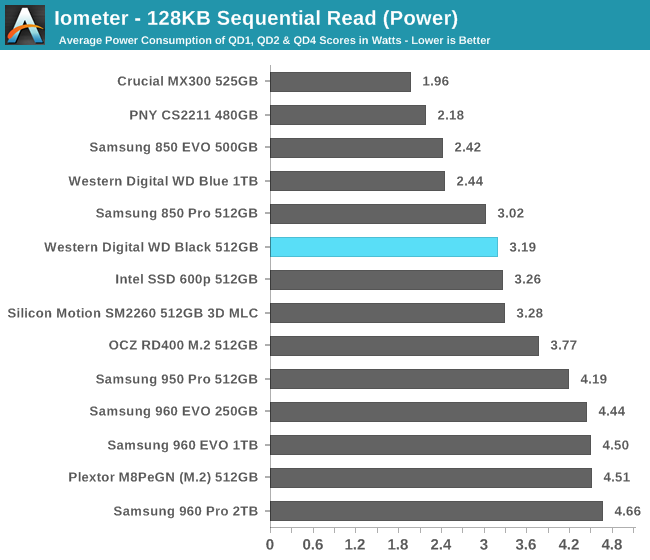
The WD Black has lower power draw than any other PCIe SSD during the sequential read test, and its efficiency is better than almost all other TLC drives (SATA or PCIe). However, the WD Black's efficiency is still about 60% worse than the Samsung 960 EVO.
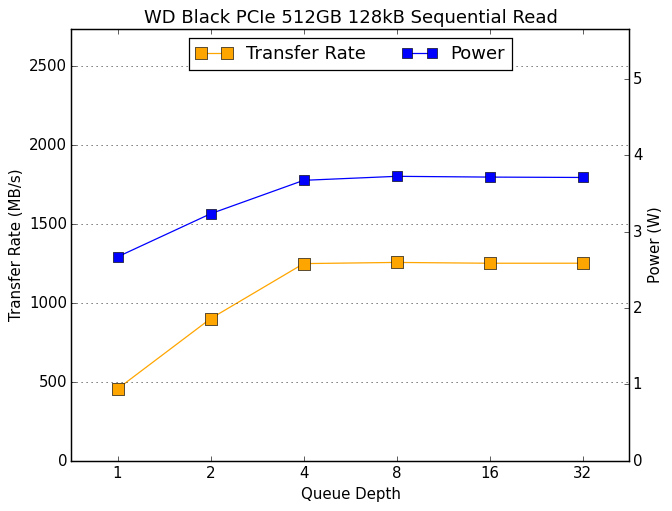 |
|||||||||
At QD 1 the WD Black is performing close to the limit of SATA, and it saturates by QD4 at almost 1.3GB/s. Power consumption never quite reaches 4W, so thermal throttling is very unlikely.
Sequential Write Performance
The sequential write test writes 128kB blocks and tests queue depths ranging from 1 to 32. The queue depth is doubled every three minutes, for a total test duration of 18 minutes. The test spans the entire drive, and the drive is filled before the test begins. The primary score we report is an average of performances at queue depths 1, 2 and 4, as client usage typically consists mostly of low queue depth operations.
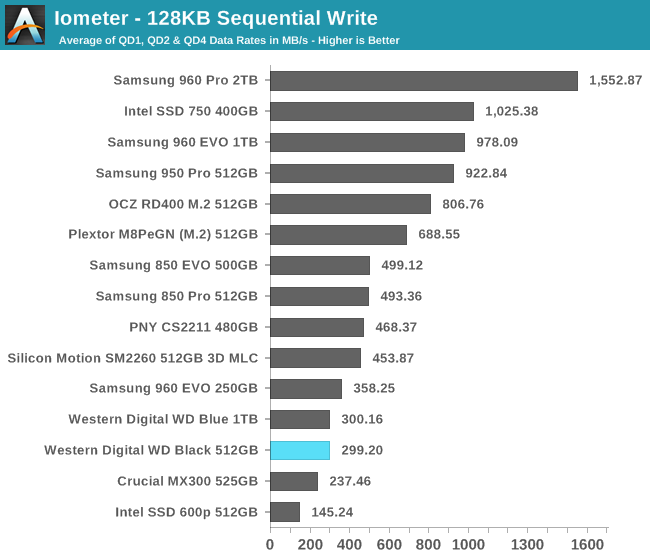
The sequential write speed of the WD Black is tied with the WD Blue and outperforms only the drives using IMFT 3D TLC. The Samsung 960 EVO and all of the MLC SSDs in this comparison sustain much better sequential write performance.

The WD Black's power consumption during the sequential write test is on par with other PCIe SSDs, giving it a typical efficiency for planar TLC SSDs. The WD Black is more efficient than the Intel 600p but loses quite badly to the other 3D TLC drives.
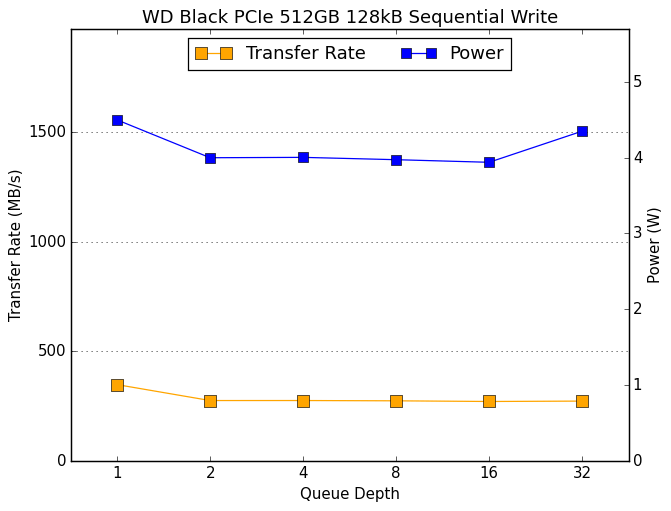 |
|||||||||
The WD Black hits steady state during the first phase of the test and power and performance remain the same for the rest of the test, except that power consumption jumps up a bit at the very end. At no point during this test does the WD Black's sequential write speed exceed what SATA SSDs are capable of.










36 Comments
View All Comments
BrokenCrayons - Thursday, March 9, 2017 - link
I hope they're not foolish enough to think that producing bottom feeder SSDs will slow the decline of their hard drive business. They're certainly aware of the fact that there are other companies that will land sales that shrink their hard drive business even if they never produce their own solid state storage solutions. It's genuinely perplexing why WD isn't pushing SanDisk to develop a more competitive product line. Maybe they are and this is just a stopgap measure, but I do wonder what's happening.timbotim - Thursday, March 9, 2017 - link
I simply don't get this SSD for desktops. If you're going to be in the slow SSD market don't you just need to be the cheapest? If you're not, what's the point? Do you hope there's sufficient clueless/confused users out there who will buy on availability?I'm pretty sure real user-facing usability is all about QD1 sequential R & W performance (and I'd guess R >> W), and then it's about price. So that's the 960 Pro on performance and the MX300 on price. Everything in between is the best QD1 sequential for the buck (probably why the best sellers are the 850EVOs and SSD PLUSs).
For laptops, replace MX300 with 600p I guess.
Jedi2155 - Thursday, March 9, 2017 - link
It would be nice if you could delineate the NVMe interfaced SSDs versus the SATA models. That way its easier to tell the performance between the two.Qostaarg - Saturday, March 11, 2017 - link
No samsung no party. performance like a potato.Gonemad - Tuesday, March 14, 2017 - link
For me it looks like a great alternative to my ageing rusty spinners for a boot drive on my 8 year old clunker.I won't even have to provision SATA or power cables for it, improving a little bit the cable clutter on my planned upgrade. Faster drives are on the too expensive side, cheaper drives are on the too slow side of the scale, so it becomes a good budget compromise by accident.
This guy has a weird place on the market, and I have a weird upgrade case to do from mechanical clatters, er, platters, so it fits.
Of course I will keep researching into options until the last minute.
jonathan1683 - Wednesday, March 15, 2017 - link
I feel bad when companies make bad decisions like this. I often wonder who made these decisions or if they tried as hard as they could and just fell short. I really like WD as a company, but I see their future may be grim. Hopefully they get it together.